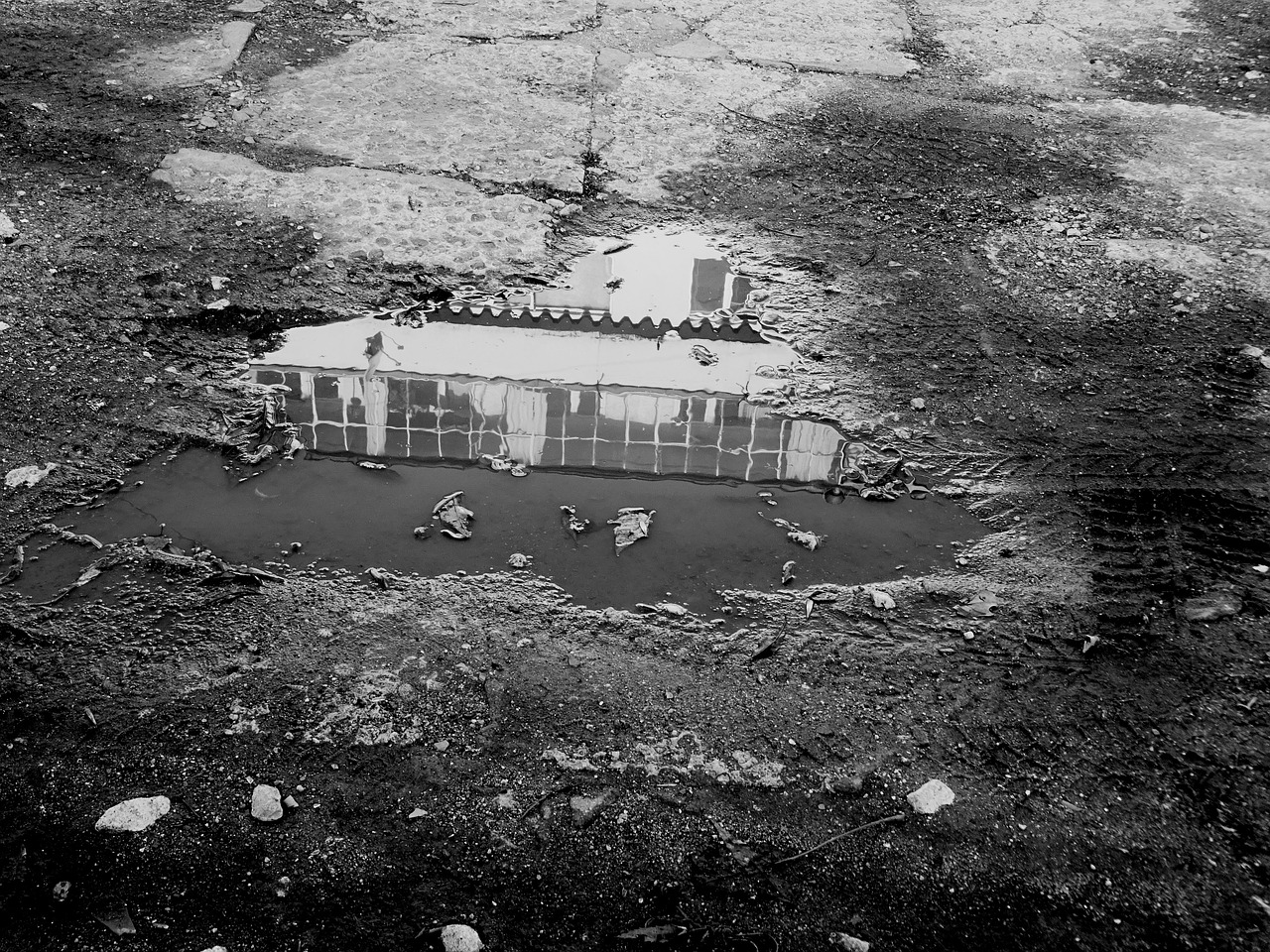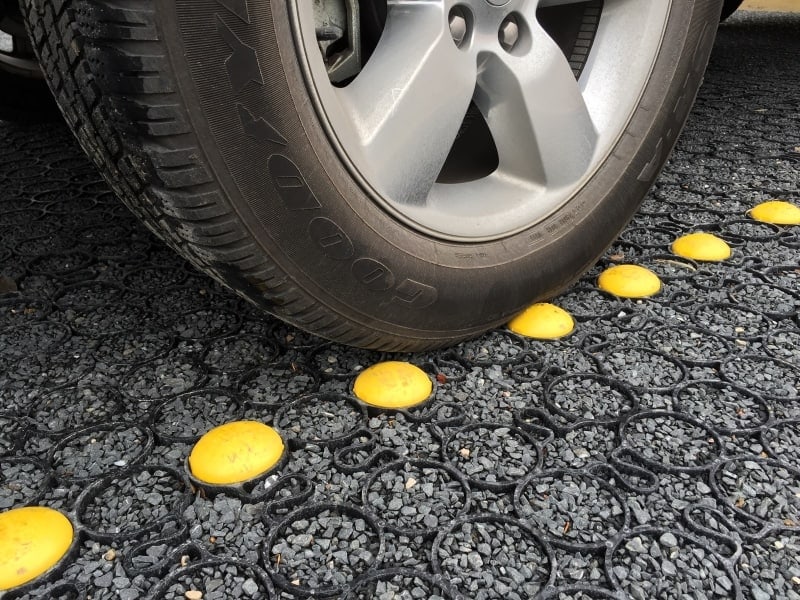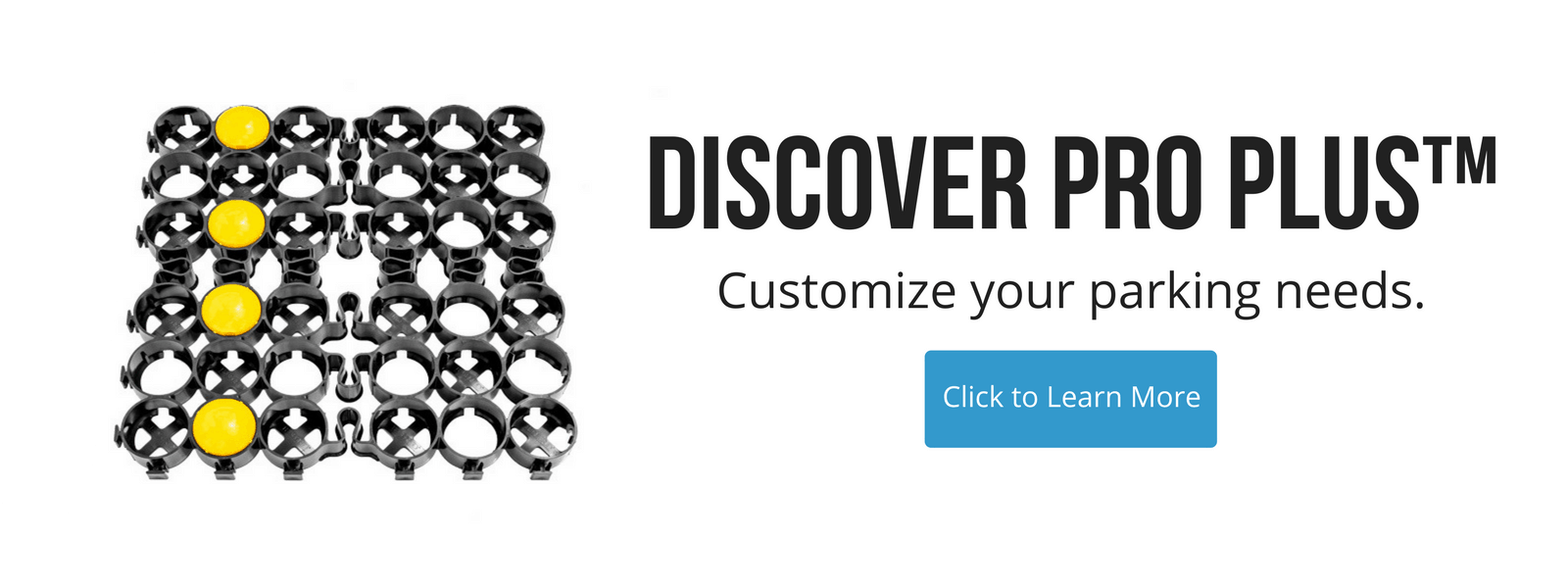Taxes on impervious surfaces can come in many shapes and forms. Whether it’s called rain tax, drainage fee, stormwater fee or impervious tax, this fee is generally dependent on the surface area of impervious cover that is present on site.
Are Impervious Surfaces Taxed?: Learn to Save More Money
Impervious Surfaces Does More Harm Than Good
 As to why taxes are placed on impervious cover, there needs to be a closer look at how impervious cover affects the environment and community.
As to why taxes are placed on impervious cover, there needs to be a closer look at how impervious cover affects the environment and community.
- Impervious Cover Creates Runoff: Natural water absorption is prohibited when an impermeable surface is present, which acts as a barrier. Water is forced to flow out into the closest drainage system and discharged to far away locations where it is treated.
- Depletes Groundwater Recharge: Since water is unable to absorb into the ground and is transported far away from its original source, groundwater recharge is depleted. This can become more severe in urban areas where impervious cover is more accumulative. Because groundwater recharge is depleted, local aquifers are running low and this poses serious problems, such as sinking land and loss of crops. Therefore,the need for water conservation is on the rise.
- Creates Pollution: Impervious surfaces such as concrete and asphalt are manufactured materials that require the burning and use of fossil fuels. The production and transportation of this material also uses fossil fuels, which emit carbon dioxide and other gases into the atmosphere. This fast emission of gases overwhelms the levels present in the atmosphere causing tears in the ozone layer and trapped heat, which both contribute to global warming and other environmentally damaging effects.
- Spreads Pollution: As mentioned before, water is unable to naturally absorb into the ground and instead runs off impermeable surfaces into drainage systems. On its way to these systems, water picks up pollutants and contaminants that have accumulated on concrete and asphalt, such as car fluids, pesticides, fertilizers and animal waste. Although stormwater runoff is sent to treatment plants to be treated before becoming drinkable, stormwater drainage systems can be easily overwhelmed during extreme weather causing polluted water to flow into local bodies of water that contaminate safe, drinkable groundwater.
It is evident that impervious cover causes more harm than good. Ensuring the environment is protected is of dire importance to a community and city to maintain natural resources and natural aesthetics.
Where is Your Money Going?
Taxes are implemented by the government and smaller governing bodies to source funding for numerous of resources made available by the government. Some of these resources include building streets and freeways for a better infrastructure. Other resources include departments, such as the department of transportation, and their employees to maintain licensing and other regulations in place. Each state, city and county differs in how, why and what they collect for taxes.
Specifically, the impervious cover tax is levied for these reasons:
- More Pervious Cover: The tax is intended to discourage more impervious cover since impermeable surfaces tend to create and spread stormwater runoff and pollution. Densely developed cities in particular prefer pervious cover as a low impact development construction practice to reduce the burden on infrastructure and stormwater management systems.
- Improve Infrastructure: The city is in charge of maintaining communities and quality of life to preserve a healthy city. Depending on the city’s funding distribution, taxes are implemented and funding can go to numerous efforts to maintain a good community. In an effort to promote pervious cover, impervious cover taxes on newly developed property such as hardscaped parking lots are usually distributed to fund improvements of infrastructure and/or stormwater management systems that have aged, weakened or need added capacity.
- Create Mindful Development: Urban cities today are embracing natural aesthetics for many reasons. Tourists and their tourist dollars travel to the most innovative, green and livable cities, boosting local economy. Incoming tourism could also potentially draw new residents. A city that embraces sustainability, natural scenery and environmentally sound new development is an attractive destination to either visit or live.
Here’s How Houstonians Pay Their Taxes
In 2010, the drainage utility fee was put into effect to fund a pay-as-you-go program to renovate Houston’s streets, stormwater management systems, and infrastructure. The fee was based on the amount of surface area of impervious cover due to its presence causing a rise in stormwater runoff. The city aims to encourage the use of pervious cover since the city has suffered extreme flooding that has damaged properties and risked people’s safety.
- For residential properties with an impervious surface area of 15,000 square feet, the annual drainage utility charge would be $40. Although small, taxes can easily add up and cutting costs would make a significant impact on a family’s income.
- For non-resident properties with an impervious surface area of 15,000 square feet, the annual drainage utility charge would be $480. Small, medium and large business could benefit from saving as much as possible in taxes to be able to operate their business.
Start Saving Money, Now
Although these taxes are generally going towards improving the community, the amount of taxes you pay every year can be overwhelming on you and your business. Being able to cut down on taxes is everyone’s goal.
Here’s how:
Add or Replace Impervious Surfaces with Permeable Pavers in These Applications
-

- Grass Driveways: Some homeowners want a driveway but also maintain the natural vegetation. So how can they make their cake and eat it too? They opt for grass driveways made from plastic, permeable pavers that allow water to filter through that create a stable ground for vehicle parking and also maintain and protect grass to keep the natural greenery.
- Patios: Backyards are the best places to hang out on a bright, sunny day. Building the best patio for fun and games is necessary for any family. They are great for stable ground to place outdoor furniture and protect feet from rocks and such but patios tend to be impermeable if made with concrete. Instead create patios, even pool skirts and hot tub pads, that are permeable and puddle-free for any excessive splashing.
- Parking Lots: Parking lots take up a lot of surface area but are needed to offer stable ground for parking and heavy traffic. Fortunately, some pervious surfaces are just as durable and can even be easier and cheaper to install. Commercial developers will benefit from having a permeable parking lot in the short and long run. Save on construction costs and create parking that is permeable.
- Grass Parking: Lawn parking is common at parks, fairgrounds, drive-in theaters and other outdoor events. Driving cars across grass, especially when wet, causes mudding, rutting and erosion. Use plastic, permeable pavers to create grass-covered parking to stabilize the ground and prevent damage while still enjoying the natural aesthetic.
- Pathways & Sidewalks: Although pathways and sidewalks are small in comparison to parking lots, using impermeable surfaces for these applications can still cause a negative impact. Using permeable surfaces can aid in natural water absorption and maintain the natural vegetation. National parks are well-known for maintaining the natural environment but also giving visitors easy access to enjoy the scenery. That’s why they tend to opt for permeable pavers to have the best of both worlds.
Build Towards the Sky
-
- Depending on the definition of what is exactly being taxed, some of these taxes are calculated depending on the surface area of impervious cover on site. Building vertically up requires less surface area of pavement. With less surface area of pavement, any remaining and necessary pavement can be built with permeable surfaces to save even more.
Added Perks of Pervious Cover

- Natural Water Absorption: With the presence of pervious cover, your property is now part of the groundwater recharge system! Water can now naturally absorb into the ground to be filtered and deposited in pockets of water, such as aquifers. Local water sources can be replenished and there is no need to waste time and money drilling new wells in desperate search for groundwater.
- Filtration of Pollutants: There is a process before contaminated water becomes drinkable groundwater that is both miraculous and absolutely essential. As soon as water hits natural ground it starts to permeate through. As it trickles down, soil and rocks act as a catch-all for any particles in the water that are foreign. Eventually, it settles in underground pockets called aquifers until it is pumped up through a well.
- Made from Recycled Material: Permeable pavement and surfaces are in themselves eco-friendly but some are also made from recycled material. Choosing to create products with recycled materials is another way to positively impact the environment. The average American throws away 185 pounds of plastic per year. In Los Angeles alone, 10 metric tons of plastic fragments are swept into the Pacific Ocean every day. Being able to prevent plastic from invading our environment and slowly rotting away (100+ years) in landfills by recycling is dire.
- Minimize Transportation Costs and Consequences: Another way to be eco-friendly is to cut the amount of air pollution caused by emissions from the burning of fossil fuels. Transporting materials needed to produce impermeable pavement such as concrete and asphalt requires long-distance transportation. Raw materials are brought from far distances to production facilities and then transported to job sites elsewhere. Because these materials are incredibly heavy, the amount of energy used for transportation is alarmingly high and the rate of pollution released is multiplied. Lightweight pervious surfaces, such as permeable pavers, require little energy and small costs to transport.
- Help Control Erosion: Surprisingly, soil management is important when it comes to erosion control. The topsoil that is rich in nutrients and covers vegetation can be easily washed away during heavy rainfall. When this layer is removed, only soil that has few nutrients is left behind causing vegetation to starve and die off. The roots of vegetation hold together layers of soil so when they begin to die off, the soil around begins to displace. Another disadvantage of losing that important topsoil is the need to use more fertilizers to mitigate the lack of nutrients available in the present soil. These fertilizers are then vulnerable to being washed away by stormwater, potentially contaminating local bodies of water.
Need Help Adding More Pervious Cover?
- Reach Out To Your Community
-
- Find Facebook Groups.
- Ask Your Neighbors.
- Visit Local Green Building Resources Centers.
-
- Research, Research, Research
-
- Read accredited blogs and articles regarding eco-friendly development.
- Go to the library and check out some books regarding low impact development and sustainable alternatives.
- Reach out to experts in green building, such as engineers and architects, in your community.
-
- Lastly, Don’t Be Afraid and Just Get Started
- Although this may be a new venture for you, don’t be afraid to think outside of the box to build green and efficient developments. Your small changes will make big impacts on you, your community and the environment.




